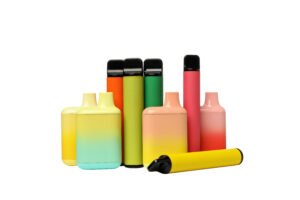Canada, known for its progressive stance on various societal aspects, has implemented specific regulations governing the vaping industry. For consumers navigating the world of vaping products, understanding these regulations is crucial. In this comprehensive guide, we’ll shed light on Canadian vaping regulations, empowering consumers to make informed choices and comply with the legal landscape.
The Legal Framework: Vaping Regulations in Canada
1. The Impact of the Vaping Products Act
The Vaping Products Act, enacted in May 2018, serves as the cornerstone of Canadian vaping regulations, including disposables vapes. This legislation sets out stringent guidelines governing the manufacture, sale, labeling, and promotion of vaping products. It aims to strike a balance between access to vaping as a harm reduction tool and protecting public health, especially among youth.
2. Restrictions on Promotion and Packaging
One of the key aspects of Canadian vaping regulations revolves around restricting the promotion and packaging of vaping products. This includes limitations on advertising, particularly where minors might be exposed, and stringent guidelines on packaging to prevent appealing to youth.
Understanding Product Standards and Restrictions
1. Nicotine Concentration Limits
Canadian regulations impose strict limits on nicotine concentration in vaping liquids. Generally, e-liquids must not exceed a nicotine concentration of 66 mg/mL, ensuring safety standards and minimizing potential health risks associated with high nicotine content.
2. Quality Control and Ingredient Disclosure
Manufacturers must adhere to stringent quality control measures and disclose all ingredients used in vaping products. This transparency ensures consumers have access to comprehensive information about what they are inhaling, promoting informed choices.
Retail and Distribution Regulations
1. Age Restrictions and ID Verification
To prevent underage access to vaping products, retailers are mandated to verify the age of customers before selling vaping products. This includes online sales, where stringent age verification processes are required to ensure compliance with age restrictions.
2. Provincial Variations in Regulations
It’s essential to note that while federal regulations exist, provinces might have additional regulations or restrictions. Consumers should familiarize themselves with both federal and provincial regulations to ensure compliance with all applicable laws.
Advocacy and Consumer Rights
1. Consumer Advocacy and Participation
Consumers play a crucial role in advocating for their rights within the vaping community. Participating in discussions, supporting evidence-based policies, and staying informed about regulatory changes enable consumers to protect their interests and access harm reduction alternatives responsibly. Stay tuned for the latest vaping Info.
2. Staying Updated and Informed
As regulations may evolve over time, staying updated with changes is vital. Following reputable sources, such as Health Canada’s official communications or credible vaping advocacy groups, ensures consumers are aware of any amendments or updates to existing regulations.
Conclusion: Navigating the Canadian Vaping Landscape
Navigating Canadian vaping regulations can initially seem complex, but with a comprehensive understanding of federal and provincial laws, consumers can make informed choices. Compliance with regulations not only ensures legality but also promotes responsible vaping practices, contributing to the overall safety and well-being of individuals and the community.
In conclusion, Canadian vaping regulations aim to strike a delicate balance between accessibility, harm reduction, and public health. By understanding and complying with these regulations, consumers can navigate the vaping landscape confidently, contributing to a culture of responsible vaping in Canada. Stay informed, advocate for your rights, and enjoy vaping responsibly within the bounds of the law.










